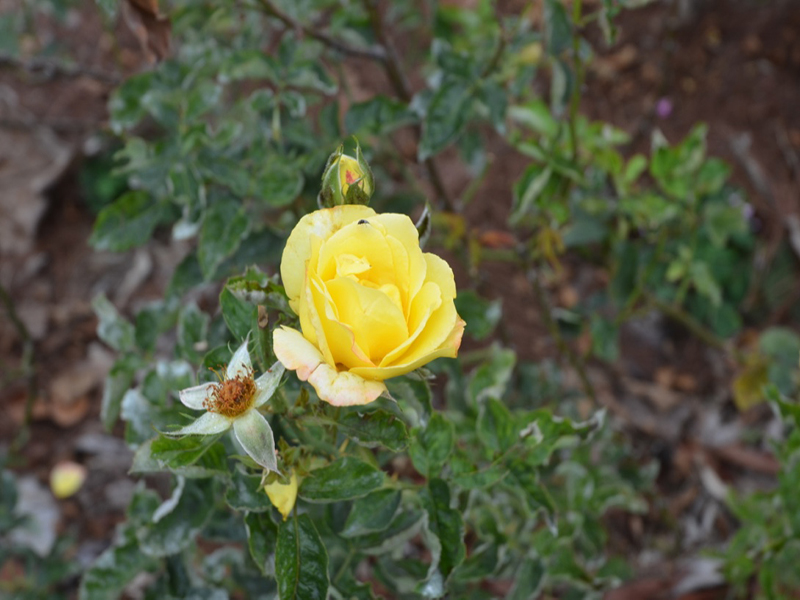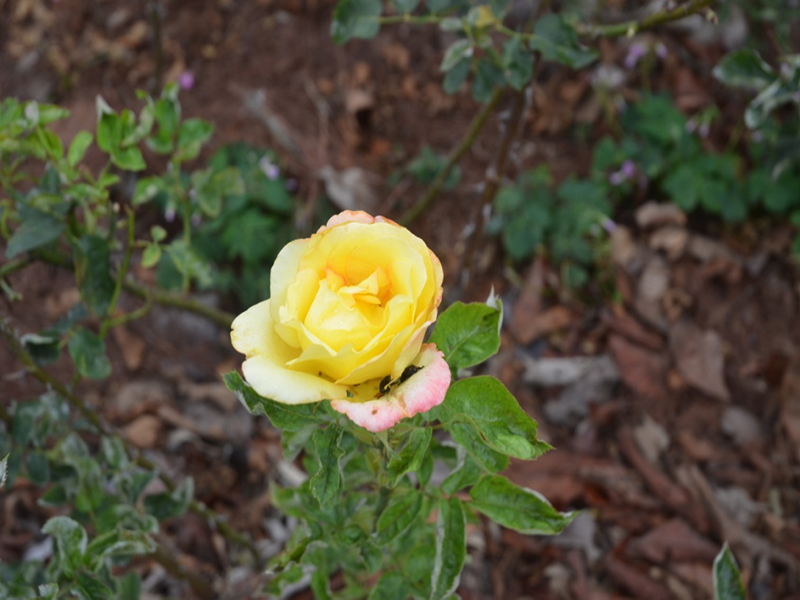| Landscape | Borders, hedges, flower beds, containers, and as a cut flower. |
| Propagation | Softwood cuttings can be taken once the first bloom occurs in spring to summer, hardwood cuttings should be taken in autumn.
|
| Cultivation | Grow in full sun with fertile, humus-rich, moist but well-drained soil. For best flowering apply a balanced fertiliser and mulch in late winter or early spring and a balanced fertiliser again in early summer. |
| Pests | Aphids, leafhoppers, spider mites, scale insects, caterpillars, mildew, dieback, canker, viruses, rust and rose slugs.
|
| Notable Specimens | Queen Sirikit Botanic Garden, Mae Rim District, Chiang Mai Province, Thailand. |
| Habitat | Horticultural origin.
|
| Leaf Description | Deep super-glossy green, margins serrate, odd pinnate, 4 leaflets in rows with one at the tip. Medium size, up to 10 cm diameter
|
| Flower Description | A yellow colour that turns into a yellowish orange with tints of pink at the edges of the petals under strong sunlight. The plant blooms year round, with an average flower measuring 5 – 10 cm in diameter. |
| Texture Description | The scent of the flowers is described to be a 'gentle fragrance'. |

